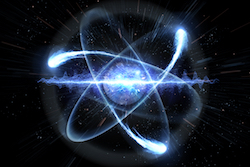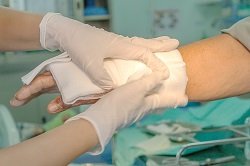Electron stopping power showcases its potential
As ions go through solids, liquids and gases, a process of neutralisation and energy loss takes place. This process is called electron stopping, and it’s fundamental to better understanding the properties of matter, which certainly explains why it has been extensively studied for over a century and is now largely understood… At least when it comes to systems close to equilibrium. Understanding dynamic systems is another story, as Professor Emilio Artacho from the nanoGUNE Cooperative Research Center (CIC), explains: “A deeper understanding of dynamical many-particle quantum systems is, I think, one of the important scientific challenges for the 21st century. First-principles calculations – quantitative simulation and prediction of the properties of matter by extensive use of supercomputers – make it easy to predict the properties of many solids, liquids or gases in or close to equilibrium. But these calculations are far behind when it comes to non-equilibrium situations: we have a good idea of the kinds of things that happen, but we cannot accurately predict them.” Making such predictions is well worth the trouble. Electronic stopping processes in solids are a key stage in processes of radiation damage, which are very important in understanding and controlling the likes of nuclear materials, the impact of cosmic radiations on vessels and crews, as well as some forms of radiotherapy. Having started a line of research on first-principles calculations for electronic stopping processes over a decade ago, the nanoGUNE CIC is a leader in the field, and the ElectronStopping (Electronic stopping power from first principles) project enabled Prof. Artacho and his team to go a step further by attempting to simulate these processes in real time. Although much research is still needed to improve their approximations and include missing effects, Prof. Artacho says the approach can deal with very different kinds of systems, from simple metals to DNA. The project has made fundamental, technical, and applied progress, as he underlines. “From a technical point of view, we have made an interesting link between the equations we are solving on the computer and the curved spaces of general relativity, two fields otherwise widely apart. This link has allowed us to suggest new numerical techniques for improving our computations. We have also been able to characterise electronic stopping processes in varied systems, from semiconductors to transition metals, and we have explored the (low energy) response of liquid water to carbon ions, as used in ion therapy.” Alongside these advances, the project has predicted an unexpected dynamical instability in these processes. “All theories of electronic stopping so far have assumed, and expected, some kind of stationary regime by which ions lose energy in a smooth fashion. But our calculations have shown an unexpected ‘flapping’ effect in the deep electrons bound to a heavy projectile ion – an oscillation analogous to the flapping of a flag in a steady wind. This would have deep connections to other non-equilibrium systems.” By better understanding radiation damage processes, ElectronStopping enables researchers to control or provide better protection against them. Whilst Prof. Artacho admits that the way society will make use of the project results is difficult to foresee, he is hopeful that engineers and entrepreneurs will be quick to think about marketable products. A follow-up project, called ESC2RAD, has already started with funding under Horizon 2020. It will see ElectronStopping techniques be applied to the characterisation of radiation damage processes relevant to space exploration, both in vessel and under Mars conditions. Prof. Artacho and his team will also be developing new theoretical frameworks to better understand electronic stopping processes.
Keywords
ElectronStopping, radiation damage, electronic stopping, radiotherapy, nuclear waste







